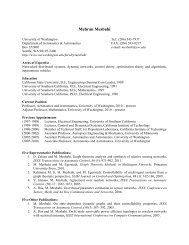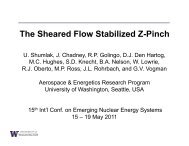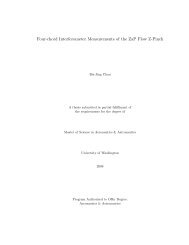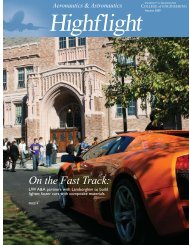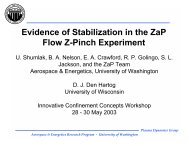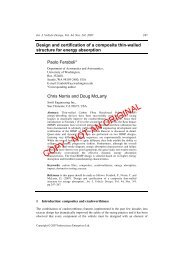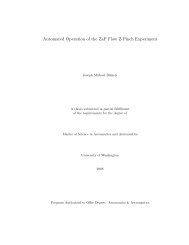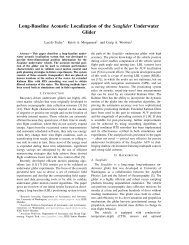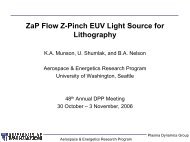Distributed Reactive Collision Avoidance - University of Washington
Distributed Reactive Collision Avoidance - University of Washington
Distributed Reactive Collision Avoidance - University of Washington
You also want an ePaper? Increase the reach of your titles
YUMPU automatically turns print PDFs into web optimized ePapers that Google loves.
32<br />
Once again the time required to attain this new velocity vector must be accounted for<br />
in order to ensure the system actually comes to a conflict-free state and that there are no<br />
collisions. The following lemma parallels Lemma 2, but obtains a smaller bound by use <strong>of</strong><br />
the now 2D acceleration vector.<br />
Lemma 3. Let there be two vehicles (i and j), each modeled by a planar version <strong>of</strong> (2.1).<br />
Vehicle j is subject to the maximum speed constraint ‖v j ‖ ≤ v j,max . Vehicle i is subject to<br />
‖u i ‖ ≤ u i,max and ‖v i ‖ ≤ v i,max and is accelerating as quickly as possible from its initial<br />
velocity, v i , to its desired velocity, v ′ i. The relative motion between the vehicles in the time<br />
it takes vehicle i to attain its desired velocity is bounded by ‖∆˜r‖ ≤ δ, where<br />
δ = v i,max<br />
u i,max<br />
(v i,max + 2v j,max ) . (4.12)<br />
Pro<strong>of</strong>. Let the angle between v i and v ′ i be 2γ and let t be the time required for the maneuver.<br />
Then ‖∆v i ‖ = u i,max t, ‖∆r i ‖ = t ‖v i + v ′ i‖ /2, and ‖∆r j ‖ ≤ v j,max t. Also,<br />
‖v i + v ′ i‖ ≤ 2v i,max cos γ and ‖∆v i ‖ ≤ 2v i,max |sin γ|. Therefore,<br />
‖∆˜r‖ ≤ ‖∆r i ‖ + ‖∆r j ‖ ≤ 2v2 i,max |cos γ sin γ|<br />
u i,max<br />
+ 2v i,maxv j,max |sin γ|<br />
u i,max<br />
≤ v i,max<br />
u i,max<br />
(v i,max + 2v j,max ) . (4.13)<br />
This bound can in turn be used in (4.3) to size the enlarged collision cone. Note that for<br />
a homogeneous group <strong>of</strong> vehicles this bound can be written in terms <strong>of</strong> the deconfliction<br />
difficulty factor as δ = 3ηd sep . Also note that if one decides to use the constant-speed<br />
maneuver on a vehicle that fits the assumptions <strong>of</strong> Lemma 3, then one can still use the δ<br />
bound <strong>of</strong> (4.12), since the pro<strong>of</strong> is only based on the vehicle’s capabilities.<br />
Theorem 1 still applies to the variable-speed maneuver, with the slight adjustment <strong>of</strong><br />
(4.6) to t = 2v i,max /u i,max (see above). However, Theorem 2 requires some adjustments to<br />
the bound χ i (D):



